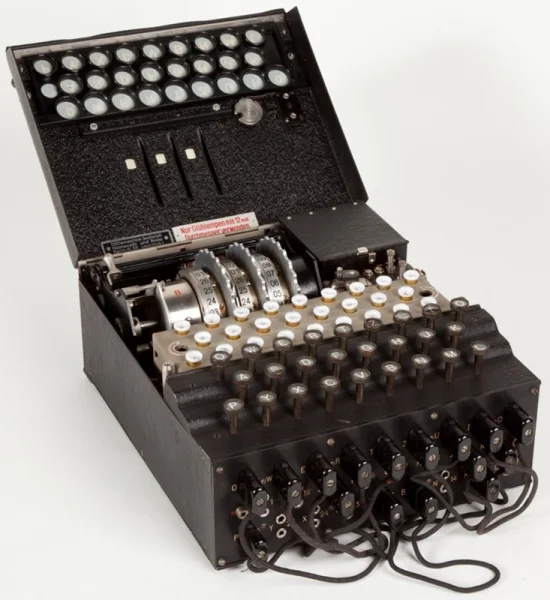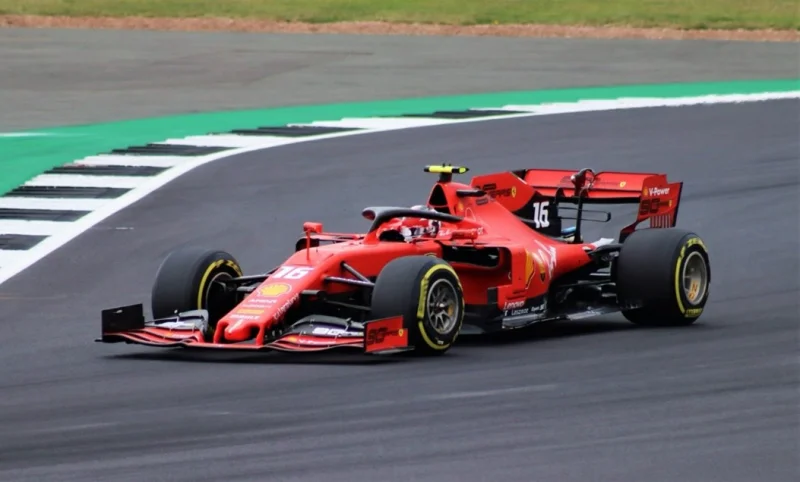
Tips/Advice Screenwriting ABCs Plot/Structure
How to Write a Dramatic Scene
by Wallace Wang
Screenwriting Lesson, 4 pages
Viewed by: 6 Residents and 1 Guest
How to Write a Dramatic Scene
by Wallace Wang
(https://15minutemoviemethod.com)
All stories are about conflict. Since every scene tells a mini-story, every scene must also show conflict. In action films, conflict is easy to see when two characters punch, kick, or shoot at each other.
However in drama, conflict is less physical and more verbal. Instead of characters trying to hit each other, dramatic conflict involves characters trying to coerce or attack solely through words alone.
Each character pursues a goal where every line of dialogue either advances towards that goal or blocks the opposing character from reaching their goal. This verbal sparring creates a back and forth struggle until one character emerges victorious.
Drama works best with contrast. The greater the contrast between opposing characters, the more dramatic the conflict appears. Watching two equally powerful characters fight isn’t as interesting as watching an underdog struggling against a far superior foe.
At the beginning of every dramatic scene, two opposing characters want a goal. Sometimes that goal may be the same goal (so only one of them can get it) but sometimes they may have completely different goals where achieving one character’s goal will completely block the other character’s goal.
When each character has a clear goal, the only obstacle in their way is the opposing character. One character begins the dramatic scene in a strong position while the other character begins in a far weaker position.
Halfway through the conflict, the strong character appears on the verge of victory. That’s when the weak character introduces a twist that completely alters the situation. From that point on, the weak character gains strength until by the end of the scene, the weak character is now strong and the strong character is now weak.
This is the basic template for a dramatic scene:
Character A: Strong Character B : Weak
- The hero has a problem and wants to solve it.
- Complications arise as the opposing character fights for their goal.
- (Twist) The hero introduces something new that changes the situation.
- The hero solves the original problem (or not).
Character A: Weak Character B : Strong
This template shows that reversing the status of the opposing characters creates the greatest amount of dramatic contrast. In between the beginning and end of the scene, each character’s actions and dialogue remains laser focused on achieving their separate goals.
Let’s see how this dramatic scene template works in three dramatic movies: The Imitation Game, which was about the Allies attempt to crack the German Enigma encryption during World War Two, Green Book, which is about a white man hired to drive a black musician to play concerts in the Deep South during the 1950s, and Ford vs. Ferrari, which is about the rivalry Henry Ford II had with Ferrari to make the best and fastest race cars in the world.
The Imitation Game

Watch this scene from “The Imitation Game” where Alan Turing (weak) interviews with Commander Alastair Denniston (strong):
Alan Turing’s goal is to get the job working on a top secret project. However, Commander Denniston takes an instant dislike to Turing so his goal is to reject him.
Initially, the interview starts off poorly for Turing and then gets worse as Commander Denniston learns that Turing doesn’t really want to work for the British government after all. To increase Commander Denniston’s disgust with Turing, he further learns that Turing doesn’t speak German and wonders how Turing expects to work in a job breaking German codes if he doesn’t know German.
When Turing responds that he’s actually quite good at solving crossword puzzles, that convinces Commander Denniston to end the interview and dismiss Turing. That’s when Turing introduces the twist by simply mentioning “Enigma”, which was the name of the secret German encryption machine that the Allies were trying to crack during World War Two.
Shocked that Turing knows about Enigma, Commander Denniston asks Turing why he mentioned Enigma. That’s when Turing says it’s obvious the government wants to hire cryptographers to crack the Enigma encryption because the Germans use Enigma to send all of their messages. If the Allies could crack Enigma, that would shorten the war.
At this point, Turing is in full control (strong) and Commander Denniston is no longer in control (weak) as Turing achieves his goal of getting the job. This complete reversal of the opposing characters’ status from the beginning to the end of the scene creates the greatest amount of contrast and hence the strongest dramatic scene.
Green Book

Watch this scene from “Green Book” where Tony Lip (weak), a white man in charge of driving a black musician named Dr. Don Shirley, to play concerts in the Deep South, confronts a restaurant manager (strong) who refuses to let Dr. Shirley eat in the dining room because he’s black:
Tony’s goal is to get Dr. Shirley into the dining room so he can eat while the manager’s goal is to keep Dr. Shirley out. Initially, the manager denies Dr. Shirley entrance to the dining room and suggests bringing him dinner to his dressing room (a storage closet) instead. When Dr. Shirley refuses, Tony tries to convince Dr. Shirley to eat somewhere else and come back because this is their last show.
Just when we think Dr. Shirley might accept Tony’s proposal, Dr. Shirley introduces the twist where he declares, “Either I eat in this room or I’m not performing tonight.”
In response, the manager takes Tony aside. The manager’s goal is to get Tony to convince Dr. Shirley to perform while Tony’s goal is to get Dr. Shirley into the dining room. When the manager tries to bribe Tony, Tony throws the manager up against the wall, but Dr. Shirley intervenes.
That’s when Dr. Shirley says he’ll play tonight but only if Tony wants him to. Although Tony fails to get Dr. Shirley into the dining room, he decides to protect Dr. Shirley’s dignity and tells him they should get out of there and leave.
Although the manager technically wins by keeping Dr. Shirley out of the dining room, he loses in the end because Dr. Shirley won’t perform and all the people in the restaurant are there specifically to see him perform.
In the beginning, Tony is weak and the manager is strong. By the end of the scene, Tony is strong and the manager is weak. The complete reversal of their status creates the greatest amount of dramatic struggle throughout the scene.
Ford vs. Ferrari

Watch this scene from “Ford vs. Ferrari” where Henry Ford II (strong) wants to fire Shelby (weak) after their Ford race car failed in multiple ways during the last LeMans race:
Henry Ford II’s goal is to fire Shelby while Shelby’s goal is to be in charge of the project.
Initially, Shelby explains that Ford tried to run the race car project by committee instead of letting one man (Shelby) be in charge. Then Shelby jokes about all the problems the Ford car experienced where practically everything broke but the brakes and even the paint job might not last more than 24 hours.
Then Shelby introduces the twist where he explains that Ford’s car went 218 miles per hour, which is the fastest any car has ever gone. Now Ford’s rival, Ferrari, knows without a doubt that Ford’s car is faster than any Ferrari.
Shelby concludes that Henry Ford II has his rival, Ferrari, exactly where he wants him as a slower car that can’t compete against a Ford. Shelby concludes his argument by simply telling Henry Ford II, “You’re welcome.”
At the beginning of the scene, Henry Ford II was strong and about to fire Shelby (weak). By the end of the scene, Shelby is strong and Henry Ford II is in a weaker position as he realizes he needs Shelby to fulfill his dream of building a faster race car than Ferrari.
The complete reversal of the opposing characters creates dramatic contrast as Shelby uses his words to convince Henry Ford II that he should put Shelby in charge of the project instead of firing him. By the time this scene ends, Shelby has backed Henry Ford II into a corner where he has no choice but to give Shelby what he wants.
Your Assignment: Study Dramatic Scenes From Your Favorite Movies
Study dramatic scenes from other movies and you’ll see the same pattern. One character is strong and the other is weak. As they verbally spar to get what they want, the strong character initially appears to be winning.
Then the hero twists the situation and starts gaining the advantage. By the end of the scene, the strong character is now in a much weaker position and the weak character is in a much stronger position.
Even if the hero fails to get their goal (as in the “Green Book” example), the hero still emerges as a winner and the formerly strong character appears as the big loser.
When writing dramatic scenes in your own screenplays, make sure one character initially appears strong and the other appears weak. Then make sure their status completely reverses by the end of that scene.
Show the strong character getting what they want initially until the weak character introduces a twist. This twist turns the situation around so the weak character becomes strong and the strong character becomes weak.
By simply mimicking this dramatic scene structure, you can write more powerful dramatic scenes in your own screenplays.





